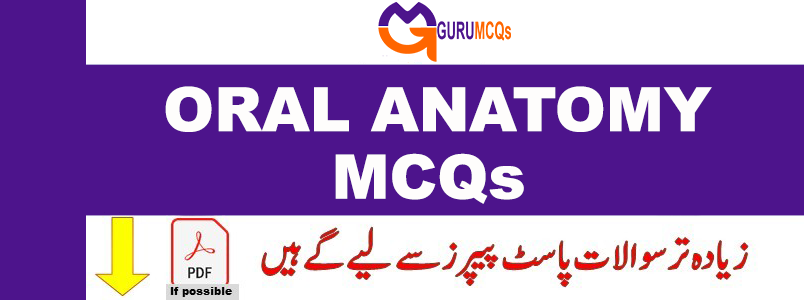
Gurumcqs.com offers a comprehensive collection of 2000+ basic and advanced oral anatomy MCQs, complete with answers and detailed explanations. This section is dedicated to covering all essential aspects of the oral anatomy subject, focusing on key topics related to the anatomy of the mouth and teeth. These include Basic Oral Anatomy, Calcification and Eruption of Teeth, Deciduous Dentition, Occlusion, Permanent Dentition, Physiologic Form of Tooth and Periodontium, Osseous Structures, TMJ, and more. The questions are carefully selected from reputable reference books on oral anatomy. These dental anatomy MCQs are valuable for interview preparation, entrance examinations, competitive exams, and certifications, catering to individuals with varying levels of experience, whether they are seasoned professionals, freshers, or students. Additionally, you can explore MCQs on medical topics on the platform.
1. Permanent Mandibular central incisor develops from_____________?
A. 1 lobe
B. 3 lobes
C. 4 lobes
D. 5 lobes
2. Cervical cross section of maxillary first premolar is_____________?
A. Dumbell
B. Kidney shape
C. Elliptical
D. Oval
3. Acute angled cusps in permanent maxillary first molar are_____________?
A. DB and ML
B. MB and DL
C. MB and DB
D. ML and DL
4. Tooth with most variable occlusal anatomy________________?
A. Maxillary third molar
B. Mandibular third molar
C. Maxillary second premolar
D. Mandibular second premolar
5. Mesial concavity making the prognosis poor for a furcation involvement is present in_____________?
A. Maxillary canine
B. Maxillary 1st premolar
C. Mandibular 1st premolar
D. Maxillary 2nd premolar
6. Corner stones of dental arches are:
A. Canines
B. First premolars
C. First molars
D. Second molars
7. Oblique ridge in maxillary first molar joins which of the following cusps____________________?
A. DL and DB
B. ML and MB
C. ML and DB
D. DL and MB
8. Upper 4 resembles 5 from which aspect ?
A. Buccally
B. Lingually
C. Occlusal
D. Proximally
9. Which of the following has a bifid root ?
A. 32,42
B. 31,41
C. 34,44
D. 13,23
10. Largest tooth in the mandibular arch is_________________?
A. Canine
B. Decidous first molar
C. Permanent first molar
D. Third molar

Pingback: Oral Pathology MCQs with Answers for Exam Preparation - GURU MCQS